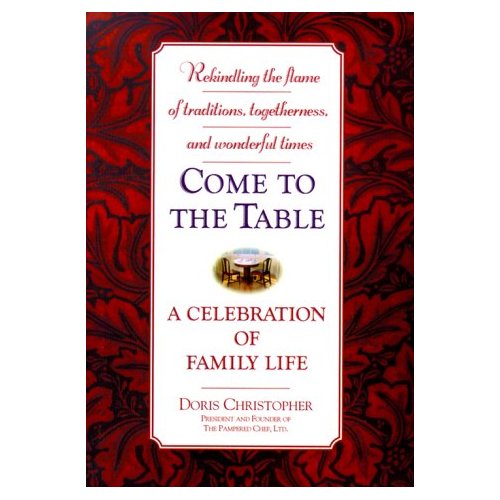ST. JOHNSBURY, Vt. — Stephen Huneck was just a boy the first time it happened. He was playing in the attic of a neighboring farm, seeking refuge from an unhappy childhood.
He found it tucked away in a corner: A Queen Anne highboy, a treasure! Over the years, there’d be others: An antique chair. A pine plank. A magic carving. And finally, an entire forest.
But the highboy came first, and he remembers it clearly:
The first piece of wood to call out to him.
He was 9.
———
Stephen Huneck is a big man with a lumberjack’s moustache and an 8‑year‑old’s grin, a modest man with modest needs: fresh air, strong coffee, faithful dogs, old jeans.
He has been many things — cab driver, junk dealer, millworker — but in 47 years, he has yet to have need of a tie. He doesn’t fancy himself a deep thinker. His motto is, “Life is a ball.”
But his plain talk turns poetic when he talks about wood. He touches it gently, speaking of beauty and mystery and magic.
“Art is not just an idea, it is magic,” says Huneck, who is part Blackfoot Indian and considers himself “a shaman of sorts.”
He is also perhaps the premier folk artist of his generation, with his own gallery, six assistants, and pieces on permanent display at the Smithsonian Institution and the Museum of American Folk Art.
Next spring, the Alexander Gallery in New York will host its second one‑man show of Huneck’s work. Next summer, the Coca‑Cola Corp. will welcome the world to the 1996 Olympics in Atlanta with a 10‑foot‑high Coke bottle Huneck is carving from basswood.
Wood is to Huneck what ballet is to Baryshnikov: It’s both his medium and his message. He calls it “my little buddy. It’s my greeting card to the world.”
Sometimes the card is elaborate, like the astronaut’s throne with the rocket‑ship legs and the backrest of planets and stars. Sometimes it’s funny, like the violin case with the outline of a machine gun carved on top.
Either way, Huneck’s message is simple: Love nature. Laugh often. Wonder. Imagine. Believe.
———
No one expected Stephen Huneck to become a great artist.
No one expected him to become much of anything.
Not his father, who predicted he’d wind up digging ditches.Not the nuns at his parochial school in Sudbury, Mass., who labeled him a slow learner and put him in “special” class.
Certainly not Stephen, who drew pictures on his test papers and did poorly at everything, even shop. “I wasn’t a right‑angle sort of guy,” he says. “I could never make anything square.”
Once he’d seen the highboy, life started to change. He began scavenging small scraps of lumber and trying to cut them. He discovered other old wooden treasures: Clocks. Cupboards. Chairs.
Finally, he knew something, something important. There was beauty in the world! He could see it! And in seeing it, he felt transformed.
Art is not just an idea. It is magic.
———
At 17, Huneck put Sudbury behind him. He hitchhiked to Vermont where he did odd jobs and lived seven years with an artist and writer who befriended him. He decided to become an artist, too.
He moved to Boston and enrolled at the Massachusetts College of Art where, of the 30 students in his sculpture class, he alone flunked. The others all worked on their projects. Huneck just stood there, overwhelmed.
“I found it so frightening; it made my heart race,” he says. “I could only do it alone, in the privacy of my apartment. Art is like prayer; to be effective you’ve got to be alone.”
He quit school and drove a cab. One day between passengers, he talked his way into an antiques show on the pretense of collecting a fare. He couldn’t afford the $2 admission, much less the $400 hand‑carved 17th century chair in the lobby, the sight of which moved him to tears. “All the circuits in my brain started firing. I couldn’t believe anyone could make anything so beautiful.”
It took him eight months to pay off the chair and bring it home to his one‑room apartment. It was his only furniture — that and a mattress on the floor.
———
In 1979, Stephen Huneck had two assets: his $400 chair and his girlfriend, a fellow art student named Gwen Ide, a petite blonde with delicate features that belied an adventurous streak.
He courted her in his cab. Every night when she finished her shift waiting tables, he drove her home. She had to lie on the floor so as not to set off the meter.
Together, they moved to Vermont where Stephen started a new career, picking through trash and knocking on doors for broken furniture to repair and resell.
He and Gwen bought the remains of a house that had been gutted in a fire. “It was like the town dump; we paid $6,000,” he says.
They restored it, resold it and traded up, this time paying $9,000. Meanwhile, “I kept buying junk and fixing it,” Huneck says. “I was trying to do stuff. I wanted to be an antiques dealer. Actually, I wanted to be an artist, but that was ridiculous.”
He compromised, fixing broken antiques and adding his own decorative details, trying to make them look authentic.
In the antiques business, this is called forgery, and Huneck was good at it. Some dealers still get mad when you mention his name. Huneck says the people he sold to knew what they were buying, although he acknowledges that wasn’t always true down the line.
Repairing antiques served a purpose. Huneck reacquainted himself with the treasures of his youth. From 1979 to 1984 “was my real art education,” he says.
He became a familiar figure around town, a big, husky man smelling of woodsmoke, selling junk from a beat‑up old truck.
That’s when it happened again.
———
One day on his rounds, Huneck came across something extraordinary: a 200‑year‑old pine plank salvaged from an old barn. “I’d love to carve that,” he thought.
Then he remembered: He didn’t know how.
As a junk dealer, “I’d repaired lots of cupboards. I’d even carved on some. But I’d never done an original carving.”
That Sunday, he retreated into his shop and re‑emerged hours later with his first original work: a black man with angel wings.
A week later, he walked out of a store to find a man peering into his truck. He’d spotted the carving. “He asked how much I wanted for it, and like a wiseguy, I said, `A thousand bucks.’ He pulled a wad of bills from his pocket and counted them out.”
Huneck raced home to tell Gwen. They couldn’t believe it. That may have been the end of that, except that the man sold the carving to the late Jay Johnson, a leading folk art dealer in New York.
“He started calling me for more. I said, `There’s this old guy in town who carves this stuff. I’ll go see if he has anything else.’ I couldn’t bring myself to admit it was mine.”
Huneck went back into his workshop and carved like a madman: Dogs. Angels. Cats. Within two weeks, he had 10 finished pieces. He and Gwen loaded them into the truck and headed for New York.
“We couldn’t even imagine New York. The truck had no starter. We had to push it to get it going. We were terrified we wouldn’t make it,” Huneck says.
Inside of a week, Johnson had sold every piece. “He called me up and said, `Make me something great.’ I made three life‑size girls jumping rope double‑dutch. Johnson sold it for $10,000. I got half.”
That day, Huneck promised himself: No more antiques. “We’d only live off the art. We had bill collectors calling every five minutes, but I didn’t want a fallback.”
There were three other rules:
Make it to last.
Make it something you want.
Never work after sunset.
———
Within a year, Huneck had had his first one‑man show. Over the next eight years, he had eight more, along with 20 museum exhibitions. His list of private collectors grew and grew.
His mind bubbled over with ideas. To keep up, he worked every day, starting at 5 a.m. Simple carvings gave way to more elaborate pieces. He played with color, perspective and form. As his skills improved and his ideas matured, traditional furniture became a canvas for contemporary notions of spirituality, whimsy and wit.
Four begging dachshunds awaiting leftovers formed the base for a dining‑room table. Pairs of shaking hands replaced ladderback slats in Huneck’s version of Shaker‑style chairs.
Other chairbacks were fashioned of leaping trout, black‑habited nuns, regal retrievers. A golden sun on the pediment of a cupboard shone down on flowers and leaves carved in wood.
Corporate collectors began flying to St. Johnsbury, thereby inspiring more art. Huneck’s “Corporate Structure” series includes clocks, stands and cupboards decorated with regiments of tiny CEOs in identical blue suits and red ties.
In 1993, the Hunecks opened their own gallery in well‑heeled Woodstock, a Mecca for wealthy tourists in southern Vermont.
Unlike most galleries, where people tiptoe about worshiping art, The Stephen Huneck Gallery has all the reverence of a kid’s birthday party. People wander in, laugh out loud, talk to strangers. The sign says, “Dogs welcome.” That’s putting it mildly. Just try sneaking past with a puppy. Someone will drag you inside.
Gold leaf is everywhere, transforming chairs into trophies, cupboards into treasures, dogs into angels. “To me, gold is energy. It is life‑giving,” says Huneck.
When Shirley, his 6‑year‑old Doberman, developed a malignant tumor, Huneck carved her likeness with gold angel wings. She recovered and lived nine more years after that.
Art is not just an idea, after all. It is magic.
———
It was 1994, a rainy day in November, raw and dismal, perfect for carving. Alone in his studio, Huneck worked steadily. By the time he looked up, it was dark.
He was pleased with the project, a huge bearded collie he’d been carving from basswood. It was coming along, though still far from finished. He hadn’t bled on it yet. If a piece didn’t have his blood on it, he figured it wasn’t much good.
The blood would come later, when he used his hand chisels to make the hundreds of tiny cuts that would give the dog’s fur the texture his work is known for. First, he’d move it down to his workshop where he’d hack at it with axes, refining its shape.
He thought about knocking off for the night. The stairs were steep and the sculpture was heavy. But Gwen wasn’t home yet and he wasn’t tired. He headed downstairs, cradling the dog in his arms.
He thought he had it.
He doesn’t remember much after that.
Gwen remembers coming home from the gallery to a house that seemed strangely quiet. Where were the dogs? She found them at the foot of the stairs guarding Stephen, who lay unconscious in a puddle of blood.
It hadn’t seemed that bad at first. A few broken ribs and a gash on the head. In the ambulance on the way to the hospital, Huneck apologized for having caused so much trouble.
From there, things went downhill in a hurry. A broken rib punctured a lung and the lung collapsed. Huneck’s breathing grew shallow. He developed pneumonia. By the time he was airlifted to Dartmouth‑Hitchcock Medical Center, the nearest big hospital, the doctors didn’t want him even trying to breathe on his own.
They put him in a coma — paralyzing him, in effect — and placed him on a respirator. He stayed that way for six weeks, antibiotics dripping into his arm.
Four months after the accident, Huneck finally left the hospital. It took another four months for his strength to return.
No sooner had he recovered when an entire forest called out to him: 150 acres of first-growth sugar maples on the dark side of a mountain in northern Vermont.
They are rare trees that cover this mountain. They have been here longer than white men, so long that their flesh has grown mottled. Some are striped like a tiger. Others are “spalted” by fungus, resulting in a network of fine, swirly lines that describe abstract landscapes in the wood.
Experts say figured maplewoods are freaks of nature resulting from abnormal growth. No one knows what causes their patterns, but Huneck thinks it’s adversity: poor soil, harsh winds, disease.
“The maple tree is the most disease‑resistant tree in the world. It’s remarkable! It heals itself,” he says.
That most furniture manufacturers consider tiger maples defective only makes Huneck admire them more.
“Everything goes against them. You’re taking something everybody says is junk and making something beautiful.”
He now has a new motto, one that would have served him well back in Sudbury, growing up with everything going against him:
“A bad tree can make a great board.”
———
Huneck’s doctors didn’t think he would make it. At one point, his heart beat so slowly, they told Gwen to tell him goodbye.
Instead, she played his favorite music and gave him foot massages. She hung his art on the walls and talked to him endlessly about a series of prints he’d been wanting to make.
Then his heart stopped.
As he lay in a coma, his lungs filled with fluid and his breathing consigned to a respirator, Stephen Huneck saw not a white light summoning him to the next world, but an elaborate carving beckoning him back to this one.
“You’re going to get better,” Gwen told him, “and it’s going to make your art better. It’s going to make everything better.”
He did. And now, everything is.



